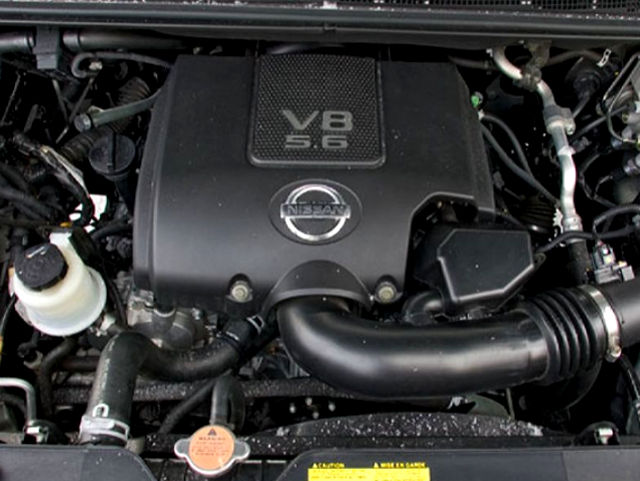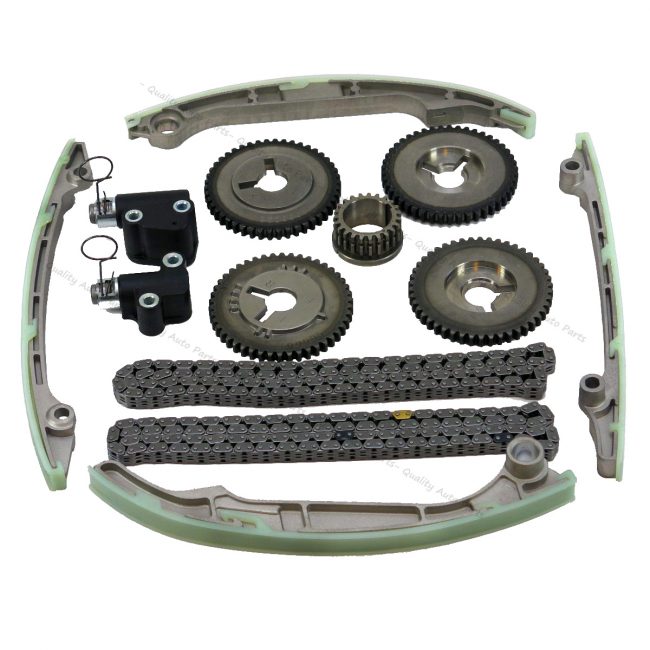
Nissan VK56DE and VK56VD engines
Content
The automotive market offers all new products that require the appropriate level of equipment. It is impossible to create a sports car without a powerful engine, just like installing a heavy-duty engine on a “weak” base will fail.
The article will consider the Nissan VK family - reliable, powerful and modern 56DE and 56VD units.
Brief historical background
The conquest of the American market took the Japanese brand a lot of time and effort. Millions were spent on the development of new components, concepts of SUVs and pickups (demand creates supply).
The VK45DE motor was taken as the basis, which has already shown reliability. The main task of designers is to adapt the driving unit to the dimensions of large vehicles.
The specialists made the following structural changes:
- the cylinder block has been improved, the height of the component has been increased;
- larger diameter cylinders were installed, and the piston stroke of the new crankshaft was 92 mm;
- chain timing increased the reliability of the design, its performance.
The practical use of the "newcomer" fell on 2003 - the start of sales of the Nissan Armada.
 Further modernization led to the emergence of the VK56VD, whose main difference was the innovative direct fuel injection system. This increased the power characteristics of cars, torque.
Further modernization led to the emergence of the VK56VD, whose main difference was the innovative direct fuel injection system. This increased the power characteristics of cars, torque.
Components and complete units are still being produced, as they have not lost their relevance in the market.
Advantages and disadvantages
Consider the strengths of both internal combustion engines:
- Extended volume, adaptation of the motor to massive vehicles.
- Increased power characteristics, torque.
- The timing chain extended the life of the motor and associated components.
- The presence of a variable valve timing system CVTCS.
Feedback from car owners and expert opinions indicate the presence of the following shortcomings:
- Increased background noise - stretching and displacement of timing marks leads to incorrect operation of the driving unit. He also "loudly" signals a problem.
- Unreliable injection pump - the problem occurs due to low-quality fuel and / or oil. The manufacturer recommends replacing every 75-90 thousand km.
- Loss of thrust, hopping - the keystone is in the catalyst, which clogs up quickly. Car owners recommend replacing it with a flame arrester.
The installation of timing marks is best done at the service station, since the resource of the internal combustion engine depends on the quality of the settings of the associated nodes, the tool used.
Technical specifications
Nissan specialists have equipped their offspring with the following set of parameters.
| Engine make | VK56DE |
|---|---|
| Cylinder block | Aluminum |
| Number of cylinders | 8 |
| Valves per cylinder | 4 |
| Compression ratio | 09.08.2018 |
| Power | 305-408 l. from. |
| Torque | 522-550 Nm. |
| Type of fuel | Gasoline A-95 |
| Engine weight | up to 227 kg |
Fuel consumption depends on the characteristics and driving conditions:
- city - 20.6 l;
- track - 11 l;
- mixed - 14.5 l.
 The manufacturer recommends changing the oil every 5 thousand km (despite the performance of the oil pressure sensor). This will protect the main components from decay products, elevated temperatures.
The manufacturer recommends changing the oil every 5 thousand km (despite the performance of the oil pressure sensor). This will protect the main components from decay products, elevated temperatures.
Suitable Oil Fluid Viscosity Standards:
- 5W-30;
- 5W-40;
- 10W-30;
- 10W-40.
Engine life is difficult to measure, as each car is in different conditions. But 400+ thousand km. the unit can withstand 100%.
| Engine make | VK56VD |
|---|---|
| Cylinder block | Aluminum |
| Number of cylinders | 8 |
| Valves per cylinder | 4 |
| Compression ratio | 10.8-11.5 |
| Power | 405-408 l. from. |
| Torque | 550-560 Nm. |
| Type of fuel | Gasoline A-95 |
| Engine weight | up to 227 kg |
The modified sample has a higher compression ratio, which affects the compression ratio. There is a direct relationship between the degree of air compression and the state of the internal combustion engine.
Torque and power characteristics are slightly higher than those of a "brother", the volume of oil is identical.
Fuel consumption - from 12.5 to 14.5 liters per 100 km. Such "gluttony" is explained by the total weight of the vehicle (pickup truck, SUV, crossover).
Both motors have found application in the line of cars of the Japanese company and its sub-brands. "Aluminum hearts" can be seen on such cars: Nissan Patrol (2010-2014), restyling Nissan Patrol (2014-2017), Infinity QX80 (2013-2014), restyling Infinity QX80 (2014-present)
Possibility of tuning
More experienced motorists independently "pump" engines using the following approaches:
- Mounting a whale compressor from Stillen - this will increase power by 10-20 “horses”, raise the torque of the stock motor to 640 Nm.
- ICE stroker - a mechanical increase in the piston stroke. In addition to expanding the volume of the motor, power characteristics and "Newtons" increase by 10-15%.

Particular attention is paid to chain oil nozzles, as their service life is extremely low, expensive repairs.
To summarize
Nissan VK56DE and VK56VD engines show reliability for 10 years. The production of components does not stop, which increases their maintainability, the final cost of the procedure.

